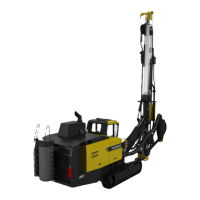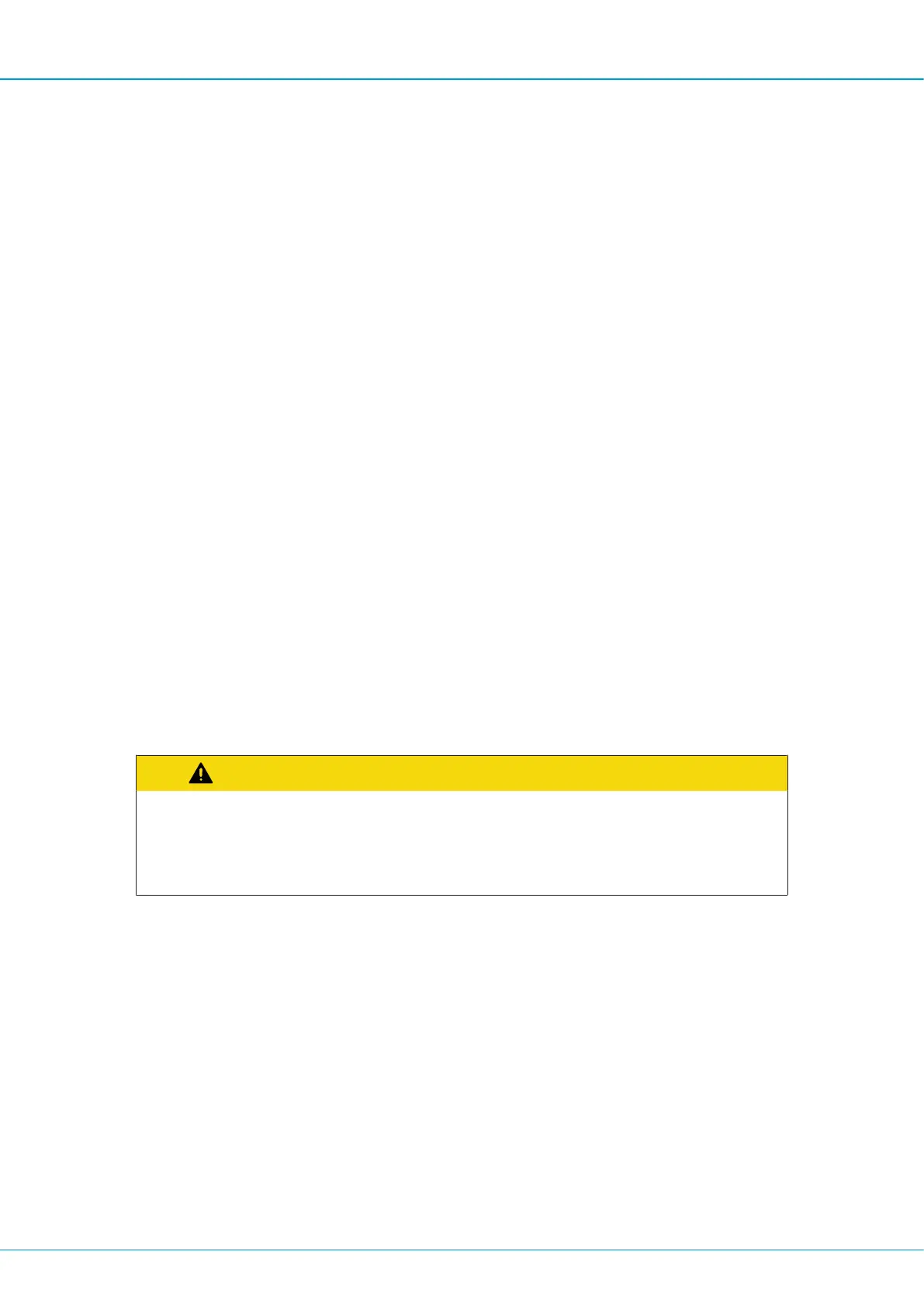SmartROC D65 Tier 4 Final 14 Options
208
14.3.3 Maintenance of components
Down-the-hole rock drill
Good lubrication, clean air and regular maintenance are critical factors for the service life of
the down-the-hole rock drill.
The most common cause of breakdown is a defective inner tube. The inner tube tends to
wear at the lower end first. If it is allowed to become too short or too thin then the pipe's
end breaks and jams under the piston during the down stroke, which leads to piston failure
and cylinder damage.
Most inner tubes for down-the-hole rock drills have a wear indicator that shows when it is
time for replacement. It can be seen and/or felt inside the bottom of the down-the-hole rock
drill when the drill bit is removed. Often, this is obvious when it becomes more difficult to
obtain the sample through the drill bit.
The service life for the down-the-hole rock drill's inner tube can vary greatly with a probable
average life of around 800 m, but in some abrasive rock types the service life can be as
low as 300 m.
Drill pipe
The drill pipes wear on the outside and need to be measured if you are worried about size.
The diameter is measured at the weld seam because this is the weakest point when it is
worn. For a drill pipe of 114.3 mm (4.5") the time for replacement is at a size of 109 mm. A
pipe of 101.6 mm (4") needs to be replaced at about 96 mm. Underdimensioned drill pipes
could fail which could lead to costly losses.
Drill pipes and inner tubes, as well as inner tubes for adapters, are wear parts. The degree
of wear depends largely on rock conditions.
The inner tube on top of the drill pipe is changed by removing the circlip. A damaged inner
tube results in considerable loss of pressure and is therefore easy to diagnose.
CAUTION
Risk of injury
A damaged inner tube causes a considerable increase in the wear of other parts. Stop
drilling immediately if you suspect a damaged inner tube.

